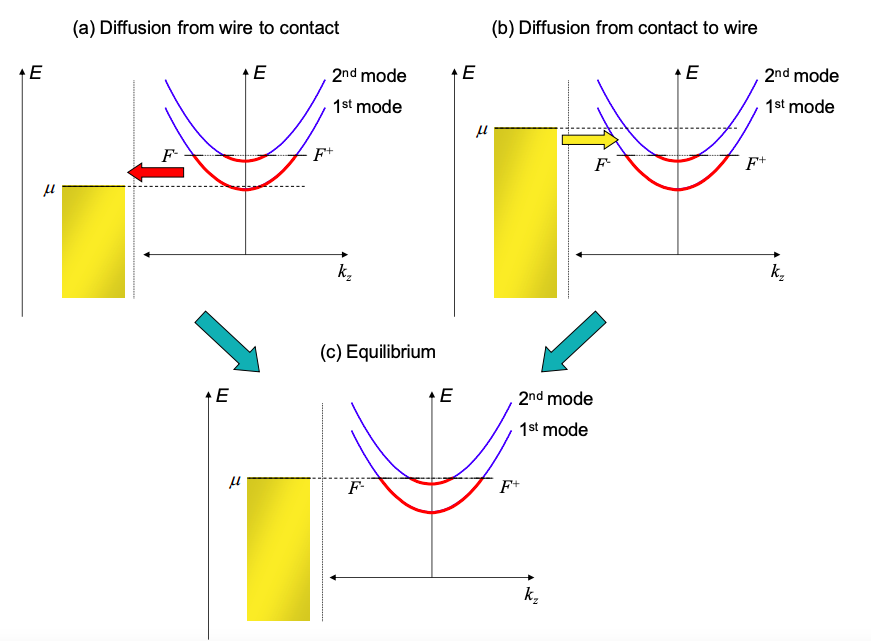4.3: Equilibrium between contacts and the conductor
- Page ID
- 50031
When the contact is connected with the wire, equilibrium must be established. For example, if \(F^{-}\) is higher than the chemical potential of the contact, \(\mu\), then electrons will diffuse from the wire into empty states in the contact. This is known as depletion. If the electrons are not replenished from another source, the loss of electrons lowers the Fermi level within the wire. In addition, since the wire has lost negative charge, it becomes positively charged, establishing an electric field that counteracts the diffusion of electrons out of the wire. Ultimately equilibrium is established when the Fermi level in the wire equals the chemical potential of the contact. If all the electrons diffuse out of the wire then the wire is said to be fully depleted.
If the chemical potential of the contact is higher than the Fermi level in the wire. Electrons diffuse into the wire from the contact, raising the Fermi level. This is known as accumulation. The addition of negative charge also establishes an electric field that counteracts the diffusion of electrons from the contact to the wire.



